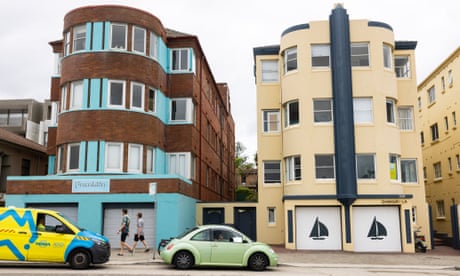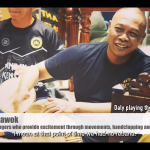John Heartfield and Silvio Berlusconi
2009 - Drawing & Print (Drawing & Print)
240 x 140 cm
Thomas Kilpper
These two images come from the series called “State of Control” which Kilpper made in the building formerly occupied by the Stasi in Berlin. As a symbol of the past there could be none more powerful than this. By carving into its floor, Kilpper laid bare its history by making images of its occupants and political figures associated with that period of history. Willy Brandt, Guenter Guillaume and Dietrich Sperling reminds us of all the intrigue of the Cold War when Brandt’s secretary Guillaume was passing secrets at the highest level to the East. Seen whispering in Brandt’s ear, he is perceived to be feeding false information. Sperling was a minister in Brandt’s government. The photograph on which the image is based was taken at the height of Guillaume’s treachery and treasonous conduct. The image of John Heartfield standing behind Silvio Berlusconi is based on a photomontage of Heartfield with the President of the Berlin Police Karl Zoergiebel of 1929 thus bringing together Heartfield, one of the greatest and most vivid critics of the Nazi era and manipulator of images through collage, with Berlusconi, one of the most rightwing, but freely elected leaders in Europe who manipulates the news and images through his media empire. These images are large scale and have a dramatic impact. In his use of woodcut, Kilpper’s work resonates with the large scale woodcuts of Christiane Baumgartner already in the collection.
Thomas Kilpper’s work engages with history and politics in a manner that recalls the 1960s in terms of his committed engagement. Typically Kilpper takes over a building and investigates its history, carving into the floor to make woodcuts which he then prints on a large scale onto fabric that floats free when he hangs it. In The Ring , a project he made in London in 2000, and of which the Tate bought a substantial part, he investigated the history of the area in which the building of the Tate was situated, making images connected with boxing (the site had previously housed a well known boxing ring), the Ministry of Defense (which had a secret printing press in the building) and Tate Modern (that was about to open around the corner). In Drowning Hercules he used bits of wood from Riddell House, a building about to be demolished to build an oversized tree which he located in the defunct swimming pool. Kilpper’s strategy is to work with buildings condemned for demolition and to use only materials he finds on site to make art. In that respect his work engages with the art of Gordon Matta-Clark but by inscribing himself into the building, rather than simply cutting it up, he puts forward a different point of view. He has no studio, is constantly on the move and starts each project from scratch. Research is a fundamental tool of his practice and the result is normally an artistic intervention into politics and history. Thus Kilpper combines a strong conceptual basis with considerable technical skill in making images that have dramatic impact and presence. Thomas Kilpper was born in Stuttgart, Germany, in 1956. He lives and works in Berlin.
Colors:
Related works featuring themes of: » German
» see more

© » KADIST
Clemens von Wedemeyer
2004Die Siedlung is a filmic documentary about the recent shift in housing developments in Leipzig-Grünau in former East Germany and its consequences on some inhabitants...

© » KADIST
Annette Kelm
2013Percent for Art is seemingly concerned with “art enrichment” by state or city arts agencies role in it, managing the artist rosters, maintaining public art collections, commissioning artworks, selecting installation sites, among other things for aesthetic and cultural enhancement in both public and private real estate developments...

© » KADIST
Hans-Peter Feldmann
The types of objects Feldmann is interested in collecting into serial photographic grids or artist’s books are often also found in three dimensional installations...

© » KADIST
Christian Jankowski
2008In New York City’s Chinatown, subject Suat Ling Chua’s morning exercise is to practice the hula hoop...
Other related works, blended automatically
» see more

© » KADIST
Thomas Kilpper
2009These two images come from the series called “State of Control” which Kilpper made in the building formerly occupied by the Stasi in Berlin...

© » KADIST
Clemens von Wedemeyer
2004Die Siedlung is a filmic documentary about the recent shift in housing developments in Leipzig-Grünau in former East Germany and its consequences on some inhabitants...

© » KADIST
Annette Kelm
2013Percent for Art is seemingly concerned with “art enrichment” by state or city arts agencies role in it, managing the artist rosters, maintaining public art collections, commissioning artworks, selecting installation sites, among other things for aesthetic and cultural enhancement in both public and private real estate developments...

© » KADIST
Martin Kippenberger
19897″ Single ‘Pop In’ by Martin Kippenbergher consisting of a vinyl record and a unique artwork drawn by the artist on the record’s sleeve...
Related works sharing similar palette
» see more

© » KADIST
Artur Zmijewski
2002Zeppelintribüne (2002) was shot near the Zepelintribune in Nuremberg, designed by Albert Speer, chief architect of the Third Reich...

© » THE GUARDIAN
Art deco density: what we learned from Australia’s first apartment boom | Housing | The Guardian Skip to main content Skip to navigation Skip to navigation ‘Invading suburbs which for years have been the pride of peaceful home-lovers,’ … Art deco apartment blocks on Campbell Parade, Bondi Beach in Sydney...
Other works by: » Thomas Kilpper
» see more

© » KADIST
Thomas Kilpper
2009These two images come from the series called “State of Control” which Kilpper made in the building formerly occupied by the Stasi in Berlin...
Related works found in the same semantic group
» see more

© » KADIST
Michael Armitage
2015In “And so it is” shows the image of a faceless man before a microphone, ready to deliver an important message...

© » KADIST
William E. Jones
2000His series, The Golden State, harkens back to his early career and his photographic training...




